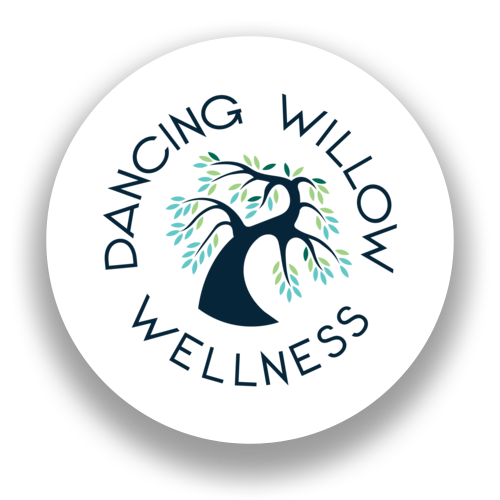How to Get Stuff Done: Part 1
Many of us struggle to get things done – whether that’s a long term work project or simply folding the laundry (ok, maybe especially folding the laundry).
There are many wonderful motivational speakers and resources that offer anything from gentle encouragement to a proverbial kick in the rear to help folks accomplish their goals. I am not one of these people, and this is not a motivational article.
This is about the things we need besides motivation to accomplish a goal, and how to make those things work for you.
I have found that there are five elements we all need to accomplish any task, and I am going to assume you already have two of them.
The first of these is the aforementioned motivation. For our purposes it doesn’t really matter if this is internal motivation – something you personally want to do, or external motivation – perhaps in the form of a paycheck or a good grade at school. (Check out my last article about study habits if this is you!)
The second assumption I am going to make is that you have the necessary resources to actually do the thing you want to do. Imagine a classroom of first graders learning about space travel. They may be highly motivated to fly to the moon, but it is vanishingly unlikely that they will do so – they simply do not have the necessary resources. The resources you may need to accomplish a goal could include relevant education and skills, as well as access to equipment, information and finances.
So, equipped with appropriate resources and plenty of motivation you may embark on your task. However, it sometimes happens that you soon find yourself in difficulties. Perhaps after a few days or weeks of work you find that it wasn’t what you really wanted after all, or maybe it blew up in your face and now you are left picking up the pieces and wondering what happened, or perhaps it is languishing at half-done without a clear way forward to completion.
This brings us to the other three absolutely necessary elements we need to get anything done: Vision, Process and Details.
Let's explore them and how they relate to each other.
Vision: This is the end result of all the doing – the thing you are wanting to accomplish, the dream, the goal.
Process: This is the pathway that takes you from where you are right now to the vision. It included all the steps you will need to take to get there.
Details: These are the small but oh-so-salient points that will define the vision and make the process as smooth as possible.
All three elements are intertwined and very much needed for the successful completion of our goals.
The vision gives us a destination, an end goal. The visionaries among us can see and describe this with absolute clarity. They know how it will look, sound, taste and feel. They can take a rough idea and flesh it out into a technicolour world. But without a process to create a way towards it or details to smooth the path, the vision remains an unattainable dream.
The process provides the way forward, and the process people among us love movement and action, they want to do something, make something happen. But without a vision to provide a destination and details to define the process, a project can take on the attributes of a runaway train – a lot of movement with no clear goal and no details such as brakes or signals. A vast amount of energy is expended and the result is generally loud and disastrous!
The details exist to make the path from point A to point B as simple as possible. Detail oriented people love to collect facts and information. They can provide salient facts to refine the vision, tell us exactly what needs to happen at each step in the process, and in what order, as well as any potential pitfalls along the way. But without a clearly defined vision and process to which to apply the details, they have an unfortunate tendency to go on collecting facts and eventually bog themselves down in a swamp of increasingly irrelevant information.
Most people are more naturally inclined towards one or two of these elements. We may have learned to apply the other elements, but left to our own devices we tend to prefer just one or two.
You may have already recognised yourself in some of the above descriptions. If not, try this simple exercise:
Imagine you are an artist standing in front of a blank canvas, beside you are all the paints, brushes and tools you could desire. Now pretend you are thinking about painting on the canvas.
Are you imagining what the finished piece will look like? This is the vision.
Or perhaps you are thinking about how you would like to apply paint to the canvas, what method will you use? This is the process.
Did your mind consider the size of your brushes or the consistency of the paint? These are the details.
It is a trick of our brains that we often forget to consider the element or elements to which we are not naturally inclined.
But it is exactly these elements that are the missing piece of the puzzle when it comes to successfully accomplishing our goals. All three are essential to get anything done.
So, how do we add the missing element or elements to compensate for this quirk of our brains?
There are two answers to this question, depending on whether or not you are working alone or with other people. In my next article, we’ll look at how to create an efficient team, but for now, let’s think about how to get stuff done when working alone.
If you are working by yourself to complete a task, practice focusing on the element or elements that you don’t identify with as strongly. It can be very enticing to focus on the element that is easy for us, and ignore the rest.
For example, if you are a visionary, you can probably envision the end result of any project with a minimum of effort. You are wired to think that way. Planning out each step and working out all the details may not seem appealing, but the effort you put in here will help you realise the vision.
Likewise if you are a process person, you may love the energy that comes with beginning a new project - the dopamine hit of doing new things. However, taking the time to think clearly about where you’re headed and exactly how to get there will help channel your energy into a successful endeavor.
If, as a detail oriented person, a new project has you headed down a rabbit hole of research, take some time to consider what information is really applicable to your goals - do you really need to find absolutely every scrap of information? And what are you going to do with each fact - how will it be used?
By consciously taking time to think about all three elements in equal measure, you have a far greater chance of success in anything you do.
It can be super helpful to map out all three elements and begin to write down all the relevant information for each. This not only shows you where your natural focus is, but also allows you to see where the gaps are. Do you need to fill in the vision a little more? Are you lacking a few steps in the process? Do you need to collect some more information about the project?
Use whatever tools seem right for you. Online planning apps, mind maps or good old fashioned pen and paper all work. Nothing is set in stone, and nothing has to be perfect before you begin, but the more you plan out your project, the easier it becomes. The time spent doing this is gained back - and then some - when your project or task runs smoothly and efficiently.
Use your plan to guide you through the project. It will keep you on track and remind you of the importance of the elements your brain isn’t naturally inclined to consider. It prevents the vision expanding to the impossible, focuses the energy of doing into productive channels and keeps the relevant facts organised. You’ll find that it will give you confidence in the areas that may be outside your comfort zone, and help you complete those parts of the project. When we hold the vision, process and details in equal measure and apply them where needed, our tasks suddenly become easier, we progress smoothly, avoid pitfalls, and meet deadlines!
I’d love to hear from you if you’ve found this article helpful. Let me know in the comments and feel free to share your completed projects!





